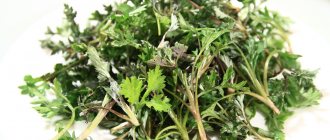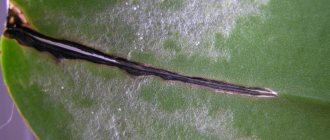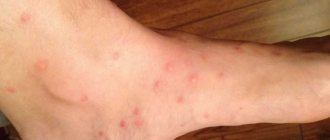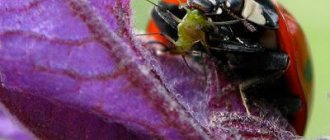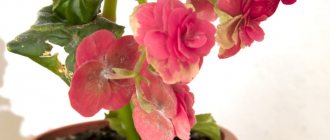Western flower parasite
- Fact:
The homeland of the Californian pest is America, its Northern and Central parts, where the presence of thrips is ubiquitous, from Mexican territories to the coast of Alaska. - Fact 2:
It was recorded in Europe in 1983. Since then, the insect has taken over the entire European continent, and has also been found in Russia since the 90s. - Fact 3:
The female lays eggs in the leaves, in specially gnawed holes or at the top of the stem. Over the course of a month, it lays up to 30 dozen eggs. When feeding on pollen, the clutch increases.
This small, terribly harmful insect is widespread throughout Russia in all regions, without exception. The danger of its vital activity is twofold: it affects almost any planting and carries severe viral plant diseases.
Description of the pest
Western California thrips (photo can be seen in the article) is a member of the thrips family of the genus Frankliniella. Body length does not exceed 1.5 mm. The color is pale yellow or brown. The body is elongated, smooth. The palps consist of three segments, the antennae - of eight. The edge of the forehead is shifted towards the mouth. The mouth cone is of a piercing-sucking type, which is typical for parasitic insects on plants. In females, the ovipositor is bent downwards.
The abdomen, consisting of 10 segments, has a serrated comb on the eighth tergite. The limbs are shortened, running, and there are bubble-shaped suckers at the ends of the legs. Thrips have a pair of narrow, long wings with pointed tips. They have cilia along the edges. Thanks to this wing structure, thrips are able to fly from place to place in search of food and while laying eggs. Insects have pronounced sexual dimorphism, the female is larger in size.
Morphologically related species
According to the morphology (appearance) of the imago, the common thrips (diversified) (Frankliniella intonsa) is close to the described species. It differs in that the eighth antennal segment is longer than the eighth, the third, fourth, fifth antennal segments are darkened at the end, the third and fourth antennae are of the same length, and there are 19–23 setae on the anterior vein of the forewing. [2]
In addition to the indicated species, thin-whiskered thrips (Frankliniella tenuicornis) and Frankliniella nigriventris, also similar in adult morphology to the western flower thrips (Frankliniella occidentalis), are often found. [2]
Lifestyle and harmfulness
The insect leads a secretive lifestyle. The Western flower thrips is a typical polyphagous plant and feeds on more than 250 plant species, including tomatoes, peppers, cucumbers, peach and lettuce. It can often be found on flowers: roses, carnations, cyclamens, gerberas. Adults suck sap from stems, leaves, flowers and fruits.
Species that live in warm regions overwinter in open ground; the insect is not able to withstand Russian frosts. They wait out the cold season in greenhouses, the larvae hide in the soil, and the adults hide in the remains of plants.
The spread of the insect occurs through the import of infected fruits, ornamental plants, flower seedlings and vegetable crops. The closest movement occurs when thrips are carried on shoes and clothes, or when they fly from a neighboring area. Females lay eggs in the tissues of the plant so that it is impossible to distinguish them. By cutting the flowers, you can transfer the pest home or to the greenhouse. During the warm season, thrips emerge from greenhouses and spread throughout the area.
The insect spends its entire life cycle on plants. Thrips (photo on a flower leaf is shown below) feed on its juice and damage tissues. They, in turn, grow more slowly, productivity decreases, flowers and leaves fall off, and fruits lose their visual appeal. A distinctive sign of the presence of a parasite on plants is the formation of black dots and light-colored dry spots on the leaves. Among other things, thrips carry some viral diseases. Weakened crops as a result of the activity of insect colonies are susceptible to spotted wilt virus, which can destroy more than a thousand plant species.
Western flower thrips is a minor problem, but the crop may be lost
Thrips or vesicular-legged small insects have settled across all continents. There are more than 6 thousand species in nature. Insects specialize in feeding on plants, in most cases choosing agricultural crops. Western flower thrips is a quarantine species. This is a harmful organism whose spread must be limited. Insects damage 300 species of plants: vegetables, flowers, and other ornamental crops in open ground and greenhouses.
Reproduction
Thrips are an insect with partial metamorphosis. Development is determined by the following stages: egg, larva, pronymph, nymph, adult. As a result of mating, females are able to lay up to one hundred eggs on the petals, stems, and tissues of the plant. The eggs are oval, light, about 0.2 mm in size. The timing of its ripening largely depends on the air temperature. At +25 °C, embryo formation occurs in three days, at 15 °C - in 11 days. At birth, male larvae emerge from an unfertilized egg.
The larva has a pale yellow color, similar to the color of the adult. The offspring, as a rule, are born simultaneously; a group of small pests can be observed in one area. The larvae go through two stages, after their completion they pass into the pronymph, and after that into the nymph. They penetrate the soil, and after one to three days an adult (imago) appears. In a favorable environment, the entire generation development cycle takes place in 12 days. In a year in greenhouse conditions, up to 15 generations of the parasite can change.
TRIPS Basic Standards
- The term of protection of property copyrights must be at least 50 years after the death of the author[2], for films and photographs this period is 50 and 25 years from the moment of creation, respectively.
- Copyright must be granted automatically and cannot be conditioned on the completion of any formalities such as registration.
- Computer programs are treated as literary works for copyright purposes and have the same protections.
- National copyright restrictions, such as fair use in the United States, must be clearly limited.
- must be provided in all areas of technology, but exceptions are permitted to protect the public interest. The period of protection of property rights provided by a patent must be at least 20 years.
- The list of objects that cannot be patented should be limited in the same way as copyright restrictions.
- Each state must provide citizens of other countries that have acceded to TRIPS the same level of intellectual property rights that it provides to its own citizens.
The first signs of plant infection
Due to the fact that the insect leads a secretive lifestyle, it is not always possible to detect the first outbreaks of affected plants. However, there are clear signs of thrips infection:
miniature punctures with dots on the leaves of plants indicate that the parasites drank sap in these places; sometimes causeless discoloration of leaves also indicates the presence of pests; Brown, brown and silvery spots can be found on the leaves and petals - this is damage caused by the parasite; the dying and falling of leaves indicates an advanced form of plant infection; deformation of flowers, stems, fruits can be caused by thrips; black spots and sticky discharge on the surface of the plant are a waste product of the insect.
Most often, thrips grow on plants that do not like frequent watering and spraying, since the pests prefer dry, warm air.
Reasons for appearance on indoor plants
The appearance of thrips on indoor plants (a photo of the pest can be found in the article) is associated with the conditions for their reproduction and penetration into the house. With this in mind, you should pay attention to the following factors:
- They often enter the room through an open window while the room is being ventilated. In addition to the fact that thrips can fly long distances, they can simply be carried into the house by a draft. You can infect indoor flowers with a pest by purchasing a new plant in the store. By placing a bouquet of wildflowers in a vase, there is a possibility that pests were brought into the living space with them.
Control measures when detected on indoor plants
Warm and dry air stimulates the proliferation of harmful thrips indoors. Pests can quickly infect indoor plants growing nearby. Before treating flowers affected by thrips, they must:
- Isolate in a separate room, wash off adults and their larvae with warm water. If possible, remove the top layer of soil and fill it with a new one, or replant the plant after thoroughly washing its roots.
How to deal with thrips on plants, we will consider further.
Folk remedies
To get rid of the pest at home, gentle methods of controlling thrips are more suitable. They are not capable of harming the plant. Their use is recommended when the first signs of infection are detected:
- A teaspoon of chopped onion or garlic is poured into a glass of water, left for 24 hours, and the plant is treated with the resulting product. Dried marigold flowers are placed in a liter jar and poured with boiling water. After a few days of infusion, the liquid is filtered and the plant is watered at the root. 50 g of fresh dandelion leaves are poured with a liter of warm water. After three hours, the infusion is filtered and the affected plants are sprayed with it. 100 g of chamomile is poured into a liter of water and left for 10-12 hours. The finished composition is filtered, a little soap is added, and the leaves and stem of the plant are wiped. After a day, the flower is rinsed with warm water. 50 g of flowering celandine is soaked in a liter of water for a day, after which the plant is treated with the prepared infusion. 100 g of dry tobacco is infused in a liter of water for 24 hours, then filtered, another liter of water is added and the plant infected with thrips is sprayed.
Notes
- ↑ 1 2 3
Frankliniella occidentalis (Pergande, 1895) (English).
Fauna Europaea
. faunaeur.org. Retrieved July 24, 2015. - ↑ 1 2 3 4
Frankliniella occidentalis Pergande.
Western flower (California) thrips (Russian). Alien species on the territory of Russia
. IPEE RAS (11.02.2012). Retrieved July 24, 2015. - ↑ 1234
Western (California) flower thrips (Frankliniella occidentalis (Pergande) (Russian). Administration of the Federal Service for Veterinary and Phytosanitary Surveillance for the city of Moscow and the Moscow and Tula regions (2009). Retrieved July 24, 2015. - ↑ 1 2
William D. J. Kirk & L. Irene Terry (2003).
"The spread of the western flower thrips Frankliniella occidentalis
(Pergande)."
Agricultural and Forest Entomology
.
5
(4): 301–310. DOI:10.1046/j.1461-9563.2003.00192.x. - ↑ 123
Western flower thrips Frankliniella occidentalis (California flower thrips) (Russian). pesticidy.ru (2015). Retrieved July 24, 2015. - Yudin LS;
Cho, J.J.; Mitchell, WC Range of Western Flower Thrips, Frankliniella occidentalis (Thysanoptera: Thripidae), with Special References to Leucaena glauca // Environmental Entomology: Journal. - 1986. - Vol. 15, no. 6. - P. 1292-1295. (unavailable link) - California thrips (Russian) (inaccessible link - history
). Federal State Budgetary Institution “Central Research and Production Veterinary Radiological Laboratory” (07/19/2013). Retrieved July 24, 2015. Archived July 25, 2015. - ↑ 123
Western flower (California) thrips - cucumber, tomato, pepper, onion, ornamental crops (Russian). rupest.ru. Retrieved July 24, 2015. - ↑ 1 2
Why Western flower thrips is dangerous (Russian).
Garden
. sadimvmeste.ru. Retrieved July 24, 2015. - Ronald F. L. Mau, Jayma L. Martin Kessing.
Frankliniella occidentalis (Pergande) hawaii.edu. Retrieved July 24, 2015. - ↑ 1 2
Order No. 673 of December 26, 2007 of the Ministry of Agriculture of the Russian Federation “On approval of the list of quarantine objects.” fsvps.ru Federal Service for Veterinary and Phytosanitary Surveillance Rosselkhoznadzor. Regulations - Order No. 501 of December 15, 2014 of the Ministry of Agriculture of the Russian Federation “On approval of the list of quarantine objects.” Federal Service for Veterinary and Phytosanitary Surveillance Rosselkhoznadzor. Regulations
- Guerra-Sobrevilla, Luis.
Effectiveness of aldicarb in the control of the western flower thrips, Frankliniella occidentalis (Pergande), in table grapes in Northwestern Mexico (English) // Crop Protection: Journal. - 1989. - Vol. 8(4). - P. 277-279. - Letourneau, D. K. and M. A. Altieri.
Abundance Patterns of a Predator, Orius tristicolor (Hemiptera: Anthocoridae), and Its Prey, Frankliniella occidentalis (Thysanoptera: Thripidae) Habitat Attraction in Polycultures versus Monocultures (English) // Environ. Entomol. : Magazine. - 1983. - Vol. 12(5). — P. 1464—1469. - Ryerson, S. A. and J. D. Stone.
A Selected Bibliography of Two Species of Orius: the Minute Pirate Bug, Orius tristicolor, and Orius insidiosus (Heteroptera: Anthocoridae) // Bull. Entomol. Soc. Am. : Magazine. - 1979. - Vol. 25(2). - P. 131-135. - Stoltz, Robert L. and V. M. Stern.
The Longevity and Fecundity of Orius tristicolor When Introduced to Increasing Numbers of the Prey Frankliniella occidentalis // Environmental Entomology: Journal. - 1978. - Vol. 7(2). - P. 197-198. - Andrew Chow, Amanda Chau, Kevin M. Heinz.
Compatibility of Amblyseius (Typhlodromips) swirskii (Athias-Henriot) (Acari: Phytoseiidae) and Orius insidiosus (Hemiptera: Anthocoridae) for biological control of Frankliniella occidentalis (Thysanoptera: Thripidae) on roses (English) // Biological Control: Journal. - 2010. - Vol. 53(2). - P. 188-196. - Key to insects of the Far East of the USSR. T. I. Primary wingless, ancient winged, with incomplete transformation / under the general. ed. P. A. Lera. - L.: Nauka, 1988. - P. 390. - 452 p.
Chemicals
In case of mass infection of plants, it is recommended to resort to insecticides. They will destroy not only the imago, but also the deposited larvae:
- "Aktara". A broad-spectrum product that is used not only to treat the plant itself, but also the soil. Effective at the early stage of infection.
"Fitoverm". A drug that has good results in the fight against many types of pests. For treatment, two ml of the product is enough, which is diluted with a glass of water. "Aktellik". A highly effective insecticide that quickly and easily kills thrips. One ampoule of the product is dissolved in a liter of water and sprayed on indoor plants. "Vermitek". A product that eliminates and permanently protects against the reappearance of pests. Two and a half ml of the product are diluted in a bucket of water and the infected areas are treated.
Plants are treated outdoors or in a well-ventilated area. After using any of the chemicals, the flower is covered with a plastic bag for a day. Repeated treatment is carried out after 10 days.
Who are they?
Thrips are small and unusually voracious insects. More than two thousand species of this pest are known, and in the territory of the former USSR alone there are about 300 of them.
Thrips are small elongated bugs of gray, brown or black color. Depending on what species they belong to, their growth can range from 0.5 mm to 1.5 cm. Most often, thrips are about 2 mm long. They have short, fast legs, on each of which there is a bubble-like growth at the very base. Because of this, they are often called bladderpods.
Fight in the garden
Thrips are a pest. To get rid of insects that attack garden crops, one of three control methods is used:
- Chemical treatment. In any dacha department you can purchase one of the special preparations: “Karate”, “Intavir”, “Fitoverm”, “Agravertin” and others. The product is prepared according to the instructions, and the crops and the soil underneath are treated. Then cover with polyethylene for a day. If necessary, repeat the treatment. Biological method. This method involves the use of ticks specially propagated in laboratory conditions. Each of them is capable of destroying up to hundreds of thrips. This method is very effective and safe. Traditional methods. Experienced gardeners recommend treating plants with an infusion of garlic or onion, since thrips cannot stand its smell. Another option is to place a container with crushed garlic or turpentine under the infected plant and cover everything with plastic.
Prevention
To prevent thrips from breeding on orchids or other indoor plants, it is important to pay attention to the following recommendations:
daily leaves and stems of flowers are inspected for thrips infection; the soil of the plant should not be allowed to dry out, thereby creating favorable conditions for the proliferation of parasites; when buying a new flower, in the first few days it is placed in an isolated room and observed for signs of pest infestation; From time to time, plants are treated with infusion of celandine or tobacco to get rid of uninvited guests.
These accessible rules will help prevent infection of indoor plants not only by thrips, but also by other diseases and pests.
Source
